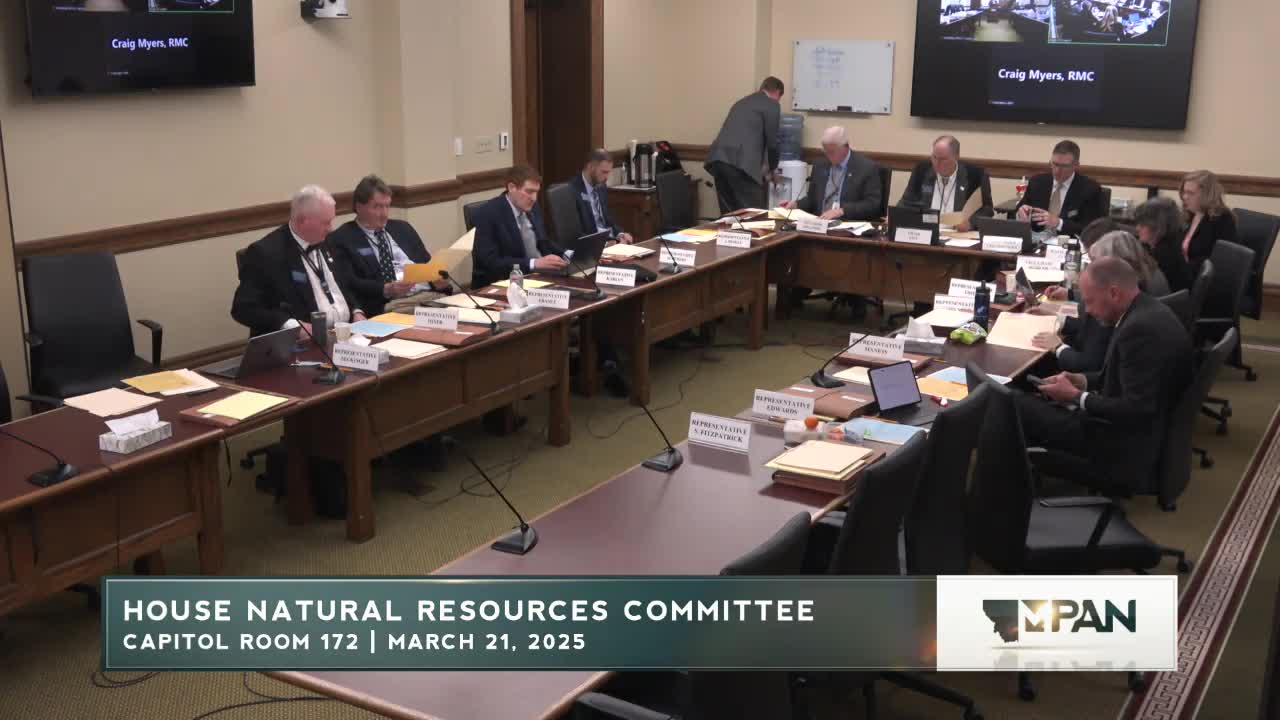Montana Senate considers stricter fines for 3 10 permit violations to protect stream banks
March 21, 2025 | 2025 Legislature MT, Montana
This article was created by AI summarizing key points discussed. AI makes mistakes, so for full details and context, please refer to the video of the full meeting. Please report any errors so we can fix them. Report an error »

In a recent meeting of the Montana Legislature's House Natural Resources Committee, significant discussions centered around the enforcement of stream bank preservation laws and the challenges posed by out-of-state landowners. The meeting, held on March 21, 2025, highlighted the need for stricter regulations to protect Montana's waterways from erosion and environmental degradation.
One of the key topics was the enforcement of the 3-10 permit system, which is designed to regulate activities that could harm stream banks. Currently, some landowners, particularly those from outside the state, are reportedly ignoring these regulations, leading to damage along the riverbanks. In response, legislators proposed amendments to increase fines for violations from $500 to $5,000 per day, with a maximum penalty of $15,000. However, concerns were raised that even these increased fines might not deter those with sufficient financial resources who may choose to pay the fines rather than comply with the law.
Senator Mark Thompson, a long-time member of the Sweetgrass County Conservation District, emphasized the importance of these regulations, sharing anecdotes about past violations and the need for stronger enforcement. He noted that many local residents are committed to preserving the integrity of their streams, contrasting their intentions with those of some newer landowners who may prioritize development over conservation.
The committee also discussed the role of conservation districts, which are local elected bodies responsible for overseeing compliance with environmental regulations. These districts often focus on education rather than strict enforcement, aiming to work collaboratively with landowners to achieve compliance. However, the current situation has prompted calls for more robust enforcement mechanisms to ensure that all landowners respect the environmental laws in place.
Another point of discussion was the Streamside Management Zone (SMZ) regulations, which govern logging activities near waterways. Proposed amendments aim to provide more flexibility for loggers while still requiring adherence to the 3-10 permit system, ensuring that environmental protections remain a priority.
The meeting underscored the ongoing tension between development interests and environmental conservation in Montana. As the state grapples with increasing pressures on its natural resources, the discussions reflect a broader commitment to preserving the state's waterways for future generations. The committee's next steps will likely involve further refining the proposed amendments and addressing the concerns raised by both conservationists and landowners.
One of the key topics was the enforcement of the 3-10 permit system, which is designed to regulate activities that could harm stream banks. Currently, some landowners, particularly those from outside the state, are reportedly ignoring these regulations, leading to damage along the riverbanks. In response, legislators proposed amendments to increase fines for violations from $500 to $5,000 per day, with a maximum penalty of $15,000. However, concerns were raised that even these increased fines might not deter those with sufficient financial resources who may choose to pay the fines rather than comply with the law.
Senator Mark Thompson, a long-time member of the Sweetgrass County Conservation District, emphasized the importance of these regulations, sharing anecdotes about past violations and the need for stronger enforcement. He noted that many local residents are committed to preserving the integrity of their streams, contrasting their intentions with those of some newer landowners who may prioritize development over conservation.
The committee also discussed the role of conservation districts, which are local elected bodies responsible for overseeing compliance with environmental regulations. These districts often focus on education rather than strict enforcement, aiming to work collaboratively with landowners to achieve compliance. However, the current situation has prompted calls for more robust enforcement mechanisms to ensure that all landowners respect the environmental laws in place.
Another point of discussion was the Streamside Management Zone (SMZ) regulations, which govern logging activities near waterways. Proposed amendments aim to provide more flexibility for loggers while still requiring adherence to the 3-10 permit system, ensuring that environmental protections remain a priority.
The meeting underscored the ongoing tension between development interests and environmental conservation in Montana. As the state grapples with increasing pressures on its natural resources, the discussions reflect a broader commitment to preserving the state's waterways for future generations. The committee's next steps will likely involve further refining the proposed amendments and addressing the concerns raised by both conservationists and landowners.
View full meeting
This article is based on a recent meeting—watch the full video and explore the complete transcript for deeper insights into the discussion.
View full meeting
